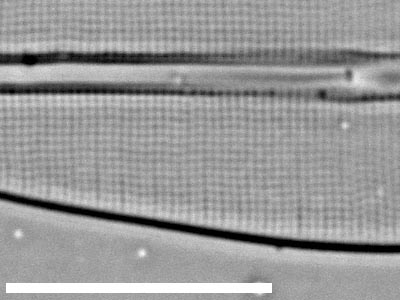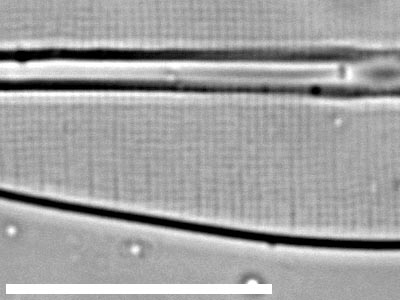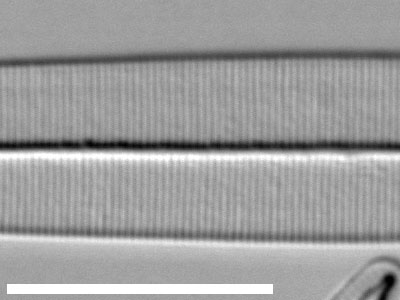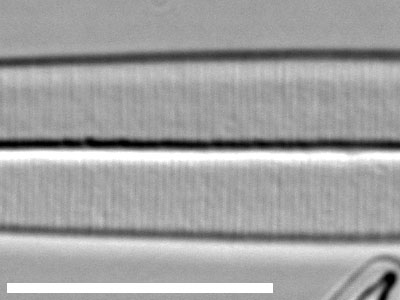Does it matter if the light microscope is not set up correctly?
- What if the condenser diaphragm is closed down too much or not enough?
- Does it matter if the condenser is positioned too low or high?
- Should the condenser be oiled to the slide?
- Effects of light quality
Should the condenser be oiled to the slide?
back upTheory tells us that, for an oil immersion objective, optimum resolution cannot be achieved if the slide (specimen) is not oiled both to the objective and to the condenser. Does it matter in practice for diatoms?
The two sets of pictures show a detectable difference. However, for most purposes the extra resolution and clarity is not essential and does not outweigh the extra danger of damaging the microscope. If extra resolution is needed, then perhaps the answer is to use an electron microscope. However, sometimes this is impossible, because unmounted material is not available. Then it may be a good idea to stretch the light microscope to its limits.
The first specimen was the same Frustulia valve as used above, with c. 31 striae in 10 µm (0.32 µm between dark lines). The second was a valve of Amphipleura pellucida with 36-37 striae in 10 µm (c. 0.27 µm between dark lines), which was photographed with differential interference contrast optics.
- Frustulia: condenser oiled to slide
- Frustulia: condenser not oiled
- Amphipleura: condenser oiled to slide
- Amphipleura: condenser not oiled


Again, correct Köhler illumination, but condenser not oiled to slide.
The longitidinal and transverse striae are both resolved, but there is a noticeable loss of clarity, relative to the image produced with an oiled condenser.
Theory indicates that a resolution of c. 0.25 µm should be achievable in this case, whereas only 0.32 is needed to resolved the Frustulia striae.
back up


